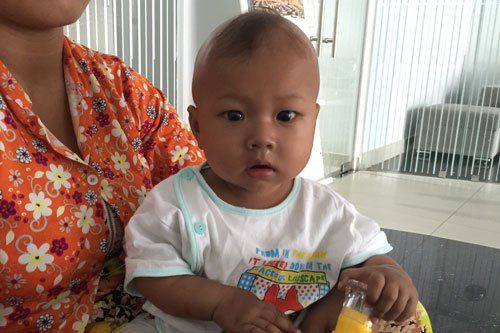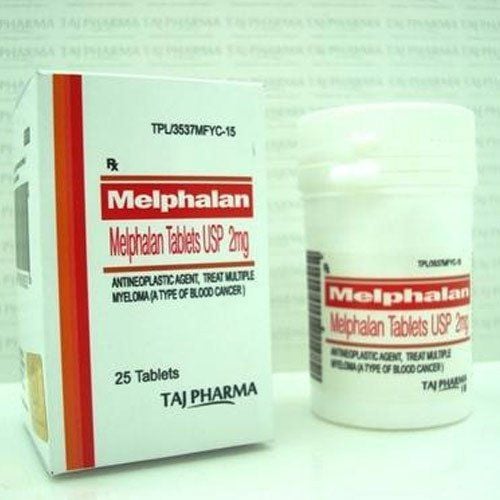This is an automatically translated article.
Neuroblastoma is a very common malignancy in children, especially young children. To have an objective and holistic view of neuroblastoma in children, let's take a look at the statistics in the article below.1. What is childhood neuroblastoma?
Neuroblastoma is a type of malignant solid tumor that originates in the nerve cells on the outside of the brains of infants and young children. It can begin in nerve tissue near the cervical spine, chest, abdomen, and pelvis, but most commonly it first appears in the adrenal glands (each person has two adrenal glands, which are the adrenal glands). located at the upper poles of the kidneys, responsible for the production of hormones that help control body activities, such as heart rate and blood pressure).Neuroblasts are immature nerve cells in the fetus. Normally, neuroblasts develop to mature and differentiate into neurons or adrenal medullary cells (cells located in the central region of the adrenal gland). Neuroblastoma forms when neuroblasts do not grow as they should.
Sometimes, babies are born with some neuroblasts still present, but they eventually mature, differentiating into normal nerve cells without becoming cancerous. An immature neuroblast can continue to grow, grow, and form an abnormal mass called a tumor.
Neuroblastoma is most common in infants and children under 5 years of age. It can form during fetal life, and is sometimes detected through fetal ultrasound. However, most cases of neuroblastoma are discovered only after the cancer has spread to other parts of the body, such as the lymph nodes, liver, lungs, bones, and bone marrow.

U nguyên bào thần kinh ở trẻ nhỏ
2. Statistics on neuroblastoma in young children
About 800 children are diagnosed with neuroblastoma each year in the United States. Neuroblastoma accounts for about 6% of all childhood cancers in the United States, and up to 90% of all neuroblastoma cases are found in children younger than 5 years of age.Among the most common cancers in children, neuroblastoma ranks 3rd, and is the most common cancer in children under the age of 1 to 2 years. However, neuroblastoma is quite rare in children over 10 years of age.
The 5-year survival rate indicates the percentage of children who can live for at least 5 years from the time the cancer is found (expressed as a percentage, that is, out of every 100 children with cancer). disease, after 5 years, how many children will be alive). For neuroblastoma, the 5-year survival rate is up to 80%, but the survival rate in children with neuroblastoma depends on many factors, especially the type of tumor that the child has.
2.1 INSS staging system According to the International Neuroblastoma Staging System Committee (INSS) staging system, neuroblastoma is classified into the following stages:
Stage stage 1: Tumor can be completely removed by surgery, lymph nodes attached to the tumor that are dredged during surgery may or may not have cancer cells, but nearby lymph nodes are not have cancer cells. Stage 2A: The tumor is still localized to the original site and cannot be completely removed by surgery, and nearby lymph nodes do not contain cancer cells. Stage 2B: The tumor is still localized to the original site, which may or may not be completely removed by surgery, but nearby lymph nodes contain cancer cells. Stage 3: The tumor cannot be removed with surgery, the cancer has spread to regional lymph nodes (lymph nodes near the tumor) or another area near the tumor, but has not spread to other parts of the body . Stage 4: Cancer has spread to distant lymph nodes (lymph nodes in other areas of the body), bones, bone marrow, liver, skin, and/or other organs, except for the sites listed at the 4S stage below. Stage 4S: The tumor is initially localized to the primary site (eg, stage 1, 2A, 2B), and has only metastasized to the skin, liver, and/or bone marrow in infants under one year of age; Metastasis to the bone marrow is minimal, often less than 10% of the total number of cells examined are cancerous. 2.2 INRGSS Staging System The International Neuroblastoma Risk Group Staging System (INRGSS) is specifically designed for the pretreatment classification system of the Subgroup International Neuroblastoma Risk Group (INRG), using only preoperative imaging results, not including surgical outcome or extent of metastases to lymph nodes to Staging, and information about the presence or absence of risk factors on imaging is required for this staging system:
Stage L1: Tumor is localized to the site initial; no risk factors on tomography (such as computed tomography - CT, or magnetic resonance imaging - MRI). Stage L2 : The tumor has not invaded beyond the original area and nearby tissues; presence of risk factors on tomography (such as computed tomography - CT, or magnetic resonance imaging - MRI). Stage M: The tumor has spread to other parts of the body (except for the MS stage below). Stage MS: Tumor has only metastasized to the skin, liver, and/or bone marrow (less than 10% of bone marrow cells are cancerous) in patients younger than 18 months of age.

Khối u chỉ di căn đến da
Disease stage based on the International Risk Classification of the tumor neuroblasts. Patient age at the time of diagnosis. Histological classification, such as maturing ganglioneuroma or ganglioneuroblastoma, intermixed or ganglioneuroblastoma, nodular or neuroblastoma. Tumor cell differentiation. MYCN gene status. Chromosome 11q status. Polyploidy of tumor cells. The Children's Oncology Group (COG) is currently using the following factors for risk grouping (but future studies will use the definition of the International Risk Group for tumours). Neuroblastoma ):
Staging is based on the International Neuroblastoma Committee's staging system. Patient age at the time of diagnosis. MYCN gene status. Tumor polyploid level (important only for children under 18 months of age). Tumor histopathology was based on the International Neuroblastoma Pathologic Classification (INPC). The classification of low-risk, intermediate-risk, or high-risk neuroblastoma is based on the definition of the Children's Cancer Society:
Low-risk neuroblastoma: Stage 1. Stage 2A or 2B and More than 50% of tumors were removed surgically, except in children with MYCN gene amplification. Stage 4S, no MYCN amplification, favorable histology, and hyperdiploidy. Moderate-risk neuroblastoma: Stage 2A or 2B without MYCN amplification and less than 50% of the tumor has been removed surgically. Stage 3 in infants younger than 18 months of age, without MYCN gene amplification. Stage 3 in children older than 18 months, without MYCN amplification, and favorable histopathology. Stage 4 in infants younger than 12 months of age, without MYCN gene amplification. Stage 4 in children 12 to 18 months of age, without MYCN amplification, redundant diploid, and favorable histopathology. Stage 4S, no MYCN amplification, unfavorable histology, and/or diploid. High-risk neuroblastoma: Stage 2A or 2B and MYCN gene amplification. Stage 3 and MYCN gene amplification. Stage 3 in children 18 months of age and older, without MYCN amplification, and histopathologically unfavorable. Stage 4 in infants under 12 months of age and MYCN gene amplification. Stage 4 in children 12 to 18 months of age with MYCN amplification, and/or diploid, and/or unfavorable histopathology. Stage 4 in children 18 months of age and older. 4S stage and MYCN gene amplification. The classification of neuroblastoma very low, low risk, intermediate risk and high risk is based on the definition of the International Risk Group of Neuroblastoma:

U nguyên bào thần kinh nguy cơ rất thấp
Survival statistics for children with neuroblastoma are estimates, and these estimates are based on the annual database of children with neuroblastoma in the United States. The above figures are updated to 2019.
Please dial HOTLINE for more information or register for an appointment HERE. Download MyVinmec app to make appointments faster and to manage your bookings easily.
References: cancer.net
MORE:
Neuroblastoma treatments Glioblastoma: What you need to know Diagnosis and treatment of glioblastoma













